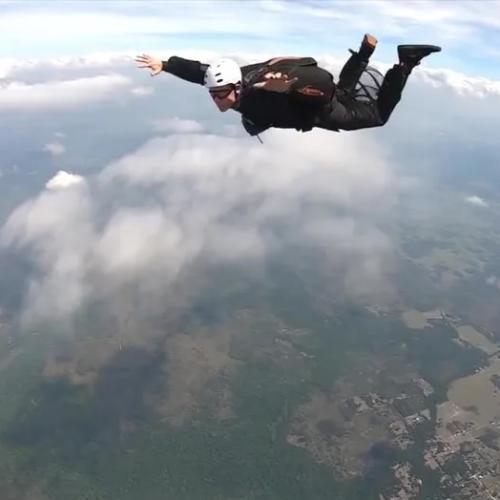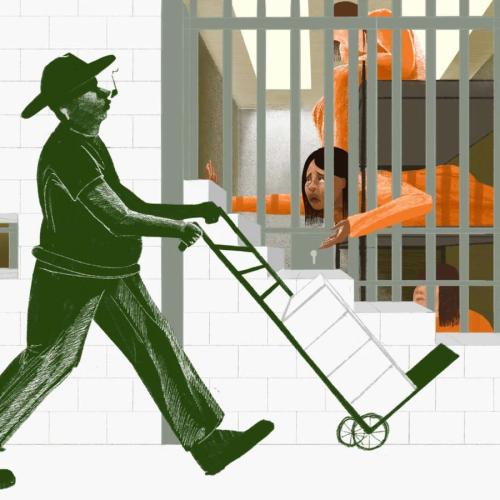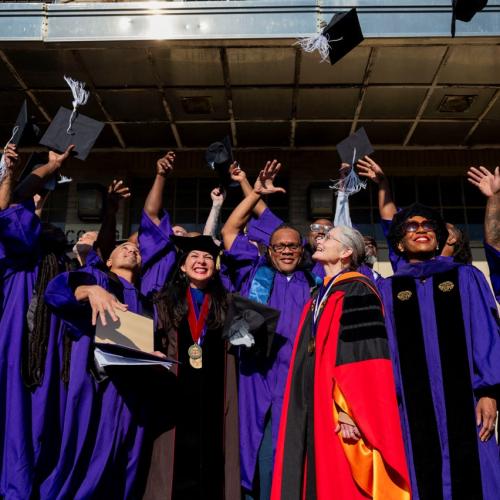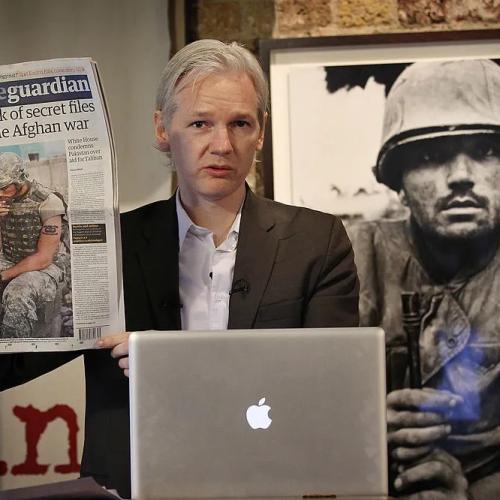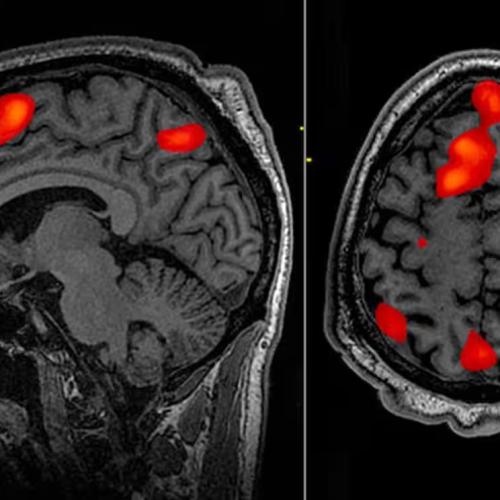Police Corruption News Articles
Below are key excerpts of revealing news articles on police corruption from reliable news media sources. If any link fails to function, a paywall blocks full access, or the article is no longer available, try these digital tools.
Maryland Gov. Larry Hogan is ... directing residents to stay home to avoid a larger outbreak of the coronavirus. Authorities have charged at least two people in recent days with violating bans on public gatherings of more than 10 people an offense that could result in a year in jail, a $5,000 fine, or both. Hogan says arrest for coronavirus offense sends 'great message.' The governors declaration mirrors a struggle across the country to enforce a patchwork of new stay-at-home orders, social-distancing directives and quarantines. Some people have found themselves under arrest for violating coronavirus regulations. In Hawaii, violators of the stay-at-home order face some of the stiffest penalties on the books to date: fines of up to $5,000 and a year in jail. Police in Honolulu have issued dozens of citations and made at least two arrests. In Texas, Gov. Greg Abbott has [called] for visitors from heavily-infected states and cities to self-isolate for 14 days or risk 180 days in jail and a $1,000 fine. [In Florida] checkpoints have been set up on interstate highways. Violators could be fined up to $500, jailed up to 60 days, or both. Washington State ... residents are invited to complete online forms detailing suspected violations by local businesses operating when they should be closed. The state threatens violators with citations, suspension notices, revoked business licenses even criminal charges. Some states that order out-of-staters to quarantine themselves for 14 days have drawn complaints from the American Civil Liberties Union for violating travelers' rights.
Note: Meanwhile in Sweden with no lockdown policies, no one is being arrested and the country has not spiraled out of control as predicted. Is it worth saving thousand of lives with these severe policies at the cost of hundreds of millions being plunged into poverty worldwide? For more along these lines, see concise summaries of deeply revealing news articles on the coronavirus from reliable major media sources.
Protesters mobilizing across the country against racism and excessive force by police have been countered by law enforcement officers more heavily armed than ever. Three federal programs have allowed local and state law enforcement to arm itself with military equipment. Since 1997, the Defense Department has transferred excess or unused equipment to state and local law enforcement agencies. Departments have acquired more than $7 billion worth of guns, helicopters, armored vehicles and ammunition under the program. The transfers were limited under the Obama administration but re-expanded under President Donald Trump in 2017. Now Congress is considering reining it in again. But that effort, if successful, is unlikely to touch an even bigger source of advanced weapons accessible to civilian police. Two Department of Homeland Security initiatives established in the wake of the September 11 terrorist attacks have given state and local law enforcement agencies billions more to buy equipment without the rules and restrictions of the Defense Department program. Because of the Defense Department program, authorized by Section 1033 of the National Defense Authorization Act, more than 6,500 law enforcement agencies across the country currently possess more than $1.8 billion worth of equipment. Since 2003, states and metro areas have received $24.3 billion from two DHS grant programs, which have little oversight: The State Homeland Security Program (SHSP) and the Urban Areas Security Initiative (UASI).
Note: Read also this wired.com article revealing how the 1033 program has shipped over $7.4 billion of Defense Department property to more than 8,000 law enforcement agencies and this NPR article detailing the military weaponry gifted to police around the US. For more along these lines, see concise summaries of deeply revealing news articles on police corruption from reliable major media sources.
Hardware that breaks into your phone; software that monitors you on the internet; systems that can recognize your face and track your car: The New York State Police are drowning in surveillance tech. Last year alone, the Troopers signed at least $15 million in contracts for powerful new surveillance tools. Surveillance technology has far outpaced traditional privacy laws. In New York, lawmakers launched a years-in-the-making legislative campaign last year to rein in police intrusion. None of their bills have made it out of committee. A report from the U.S. Office of the Director of National Intelligence, put it succinctly: “The government would never have been permitted to compel billions of people to carry location tracking devices on their persons at all times, to log and track most of their social interactions, or to keep flawless records of all their reading habits.” That report called specific attention to the “data broker loophole”: law enforcement’s practice of obtaining data for which they’d otherwise have to obtain a warrant by buying it from brokers. The New York State Police have taken greater and greater advantage of the loophole in recent years. They’ve also spent millions on mobile device forensic tools, or MDFTs, powerful hacking hardware and software that allow users to download full, searchable copies of a cellphone’s data, including social media messages, emails, web and search histories, and minute-by-minute location information.
Note: For more along these lines, see concise summaries of deeply revealing news articles on police corruption and the disappearance of privacy from reliable major media sources.
Private donors including big-box stores, fossil fuel companies, and tech giants are secretly giving hundreds of millions of dollars annually to law enforcement agencies and related foundations, allowing police to buy specialized weapons and technology with little public oversight. Experts say this huge deluge of police “dark money” funding, detailed in a new University of Chicago working paper ... leaves law enforcement beholden to the companies and powerful donors bankrolling them, rather than the communities that officers are sworn to serve. The study, which analyzed a database of nonprofit tax returns, found that from 2014 to 2019, more than 600 private donors and organizations collectively funneled $461 million to police and to other nonprofits supporting police. The Baltimore Police Department for years used private money to fund a secret aerial surveillance program that could track the locations of people throughout the city in real time. The program ... was eventually ruled unconstitutional in court. In Los Angeles, the city’s police department used money from Target ... routed through a local police foundation — to purchase software from Palantir, venture capitalist Peter Thiel’s data analytics company, that provides police massive amounts of sensitive data and purports to identify crime “hot spots.” For the most part, the millions in dark-money funding that police agencies receive each year is perfectly legal. There are largely no laws or policies governing foundation donations to the police.
Note: For more along these lines, see concise summaries of deeply revealing news articles on police corruption and the disappearance of privacy from reliable major media sources.
A man filed a federal lawsuit Monday alleging he was paralyzed and needed his legs amputated after police officers in St. Petersburg, Florida, put him in restraints, placed him in the back of a police van without a seatbelt and then drove in a reckless manner. Heriberto Alejandro Sanchez-Mayen filed the lawsuit in US District Court for the Middle District of Florida against the city of St. Petersburg and officers Sarah Gaddis and Michael Thacker. After being handcuffed, Sanchez-Mayen was placed in the back of [a police] van where there were no seatbelts. Thacker allegedly drove “in a reckless manner and at an unsafe rate of speed,” before he suddenly came to a hard stop at an alleged red light, the suit states. The hard stop caused Sanchez-Mayen to be thrown forward, and his head struck a metal partition. After driving to the Pinellas County jail, Thacker opened the rear doors of the van and found Sanchez-Mayen “lying face down, motionless, unconscious, and unresponsive,” the suit states. The officer unsuccessfully attempted to wake him up and then dragged his limp body out of the van, causing Sanchez-Mayen to hit his head on the bumper, the door and the concrete floor. Sanchez-Mayen suffered spinal cord injuries that left him a quadriplegic, or paralyzed in all of his limbs, and resulted in the amputation of both of his legs. The lawsuit states Sanchez-Mayen should not have been arrested in the first place, noting the criminal trespassing charge was later dismissed.
Note: New Haven, Connecticut has agreed to a $45 million settlement with Randy Cox, another man who was paralyzed while being transported handcuffed and without a seat belt in the back of a police van. For more along these lines, see concise summaries of important news articles on police corruption from reliable major media sources.
In 2021, bullets flew outside a 7-Eleven during a Bureau of Alcohol, Tobacco, Firearms and Explosives operation in Colorado Springs, Colorado. The same year, U.S. Marshals fired shots inside a barbecue restaurant in the Chicago area, and a firefight erupted during a Drug Enforcement Administration search aboard an Amtrak passenger train in Tucson, Arizona. Three suspects and a federal officer were killed. Miraculously, no bystanders were struck. Had they been local police shootings, they might have generated public demands to release body camera video and use-of-force investigation reports. But they were federal operations, conducted by agents and task forces with four federal law enforcement agencies — the FBI, the ATF, the DEA and the U.S. Marshals Service — in which the use of force remains largely a black box, free from public scrutiny. Those four agencies overseen by the Justice Department, among the most prestigious in the country, have been slow to adopt reforms long embraced by big-city police departments, such as the use of body cameras and the release of comprehensive use-of-force data. From 2018 to 2022, 223 people were shot by an on-duty federal officer, a member of a federal task force or a local officer participating in an operation with federal agents, according to an NBC News analysis. A total of 151 were killed. More than 100 of the shootings were investigated by local prosecutors, with only two resulting in criminal charges for officers.
Note: For more along these lines, see concise summaries of deeply revealing news articles on corruption in intelligence agencies and in police departments from reliable major media sources.
In 2021 in the picturesque mountain city of Asheville, North Carolina, The Asheville Blade journalist Veronica Coit sat in a police station waiting to be booked. Both Coit and their colleague Matilda Bliss were processed for trespassing while covering the eviction of unhoused people at Aston Park in Asheville. As of this writing, both journalists are awaiting a jury trial after appealing the guilty verdict handed down by Judge James Calvin Hill on April 19. With that decision, Judge Hill stepped brazenly on the throat of a free press, potentially introducing a precedent that makes journalism illegal – if it's the kind of journalism the ruling class doesn't like. Since 2018, as reported by the Freedom of the Press Foundation's U.S. Press Freedom Tracker, there have been four trials – including this one – against journalists for "offenses allegedly committed while gathering and reporting the news." But this is the first case of its kind to find the defendants guilty. Nearly 50 civil society and media freedom organizations, along with the ACLU of North Carolina, Freedom of the Press Foundation, Reporters Without Borders, National Press Club, the Committee to Protect Journalists and Project Censored, have called on the city of Asheville to drop the charges. But there has been no national outcry over the case in corporate media. "It's a very dangerous precedent to allow the police or anyone in government to define what it means to be a journalist," said Ben Scales, Bliss and Coit's attorney. "We simply don't allow it in this country."
Note: For more along these lines, see concise summaries of deeply revealing news articles on judicial system corruption and media manipulation from reliable sources.
The Social Media Exploitation, or SOMEX, team ... had been set up to help the FBI find informants and intelligence using information gleaned from social sites. The Intercept and Chicago-based transparency groups obtained more than 800 pages of emails and other documents about the team through public records requests. These show that the team’s officers were given broad leeway to investigate people across platforms including Facebook, Twitter, Instagram, and Snapchat, using fake social media accounts furnished by the FBI, in violation of some platforms’ policies. The week that followed George Floyd’s murder by a white police officer was an intense moment in Chicago’s — and U.S. — history. Thousands of people took to the city’s streets to peacefully demonstrate against police violence. Despite ample warning, the Office of Inspector General report found, Chicago’s police were unprepared. When they did react, their response was chaotic and excessively violent, with officers variously hiding their badge numbers, turning off their body cameras, blasting people with pepper spray at close range ... and telling an arrestee that they would be raped in jail. The SOMEX team’s reaction was also troubling. The team’s mission was to provide both the FBI and the CPD with useful intelligence. What the SOMEX officers did instead: flag potential damage of police cars, investigate the social media connections of people who had made threats online, and cull videos for the department’s YouTube channel.
Note: For more along these lines, see concise summaries of deeply revealing news articles on police corruption from reliable major media sources.
In Detroit, Tony Murray was getting ready for bed. He glanced out of his window and saw a half-dozen uniformed police officers with guns drawn. Officers searched Murray’s home. One [officer] handed him a copy of the search warrant, which stated they were looking for illegal drugs. Murray noticed something else: The address listed wasn’t his. It was his neighbor’s. Months after the 2014 raid, Murray, who was not charged with any crimes, sued Detroit police for gross negligence and civil rights violations, naming Officer Lynn Christopher Moore, who filled out the search warrant, and the other five officers who raided his home. The city eventually paid Murray $87,500 to settle his claim, but admitted no error. Between 2010 and 2020, the city settled 10 claims involving Moore’s police work, paying more than $665,000 to individuals who alleged the officer used excessive force, made an illegal arrest or wrongfully searched a home. Moore is among the more than 7,600 officers — from Portland, Ore., to Milwaukee to Baltimore — whose alleged misconduct has more than once led to payouts to resolve lawsuits and claims of wrongdoing, according to a Washington Post investigation. The Post collected data on nearly 40,000 payments at 25 of the nation’s largest police and sheriff’s departments within the past decade, documenting more than $3.2 billion spent to settle claims. More than 1,200 officers in the departments surveyed had been the subject of at least five payments. More than 200 had 10 or more.
Note: For more along these lines, see concise summaries of deeply revealing news articles on police corruption from reliable major media sources.
The indictment was damning enough: A former police chief of Biscayne Park and two officers charged with falsely pinning four burglaries on a teenager. But the accusations revealed in federal court last month left out far uglier details of past policing practices in tranquil Biscayne Park, a [suburb] of Miami. Records obtained by the Miami Herald suggest that during the tenure of former chief Raimundo Atesiano, the command staff pressured some officers into targeting random black people to clear cases. If they have burglaries that are open cases that are not solved yet, if you see anybody black walking through our streets and they have somewhat of a record, arrest them so we can pin them for all the burglaries, one cop, Anthony De La Torre, said in an internal probe ordered in 2014. They were basically doing this to have a 100% clearance rate for the city. In a report from that probe, four officers a third of the small force told an outside investigator they were under marching orders to file the bogus charges to improve the departments crime stats. Only De La Torre specifically mentioned targeting blacks, but former Biscayne Park village manager Heidi Shafran, who ordered the investigation after receiving a string of letters from disgruntled officers, said the message seemed clear for cops on the street. The federal case doesnt raise allegations of racial profiling, but records show the false charges were filed against a black Haitian-American teen identified only as T.D. in the indictment.
Note: For more along these lines, see concise summaries of deeply revealing news articles on police corruption and the erosion of civil liberties.
The Supreme Court on Monday shielded a police officer from being sued for shooting an Arizona woman in her front yard, once again making it harder to bring legal action against officers who use excessive force, even against an innocent person. With two dissents, the high court tossed out a lawsuit by a Tucson woman who was shot four times outside her home because she was seen carrying a large knife. Justices Sonia Sotomayor and Ruth Bader Ginsburg said in dissent the victim did not threaten the police or a friend who was standing nearby. This "decision is not just wrong on the law; it also sends an alarming signal to law enforcement officers and the public," Sotomayor wrote. Since the Civil War, federal law has allowed people to sue government officials, including the police, for violating their constitutional rights. But in recent years, the Supreme Court has erected a shield of immunity for police and said officers may not be sued unless victims can point to a nearly identical shooting that had been deemed unconstitutionally excessive in a previous decision. The justices did not rule on whether officer Andrew Kisela acted reasonably when he used potentially deadly force against Amy Hughes. The court instead ruled [that Kisela] could not be sued because the victim could not cite a similar case. Sotomayor said the majority had revised the facts to favor the officer. "Hughes was nowhere near the officers, had committed no illegal act, was suspected of no crime, and did not raise the knife," she wrote.
Note: For more along these lines, see concise summaries of deeply revealing news articles on corruption in policing and in the court system.
She was driving in a park with two male friends when a pair of plainclothes New York City police detectives drove up in an unmarked van. The officers, from the Brooklyn South precinct ... arrested her, put her in the back of the van in handcuffs and ordered her friends not to follow. According to prosecutors, the detectives proceeded to force the 18-year-old woman to perform oral sex on one of them, who then raped her. The 50-count indictment also alleges that the officers, who are facing charges of rape, kidnapping and official misconduct, threatened her with criminal charges if she didnt cooperate. This young womans experience ... is representative of national patterns of sexual violence by officers during traffic stops and handling of minor offenses, drug arrests and police interactions with teenagers. Research on police sexual misconduct ... overwhelmingly concludes that it is a systemic problem. A 2015 investigation ... concluded that an officer is accused of an act of sexual misconduct at least every five days. The vast majority of incidents ... involve motorists, young people in job-shadowing programs, students, victims of violence and informants. In more than 60 percent of the cases reviewed, an officer was convicted of a crime or faced other consequences. [Another] study, funded by the National Institute of Justice ... found that half of arrests for sexual misconduct were for incidents involving minors. Sexual misconduct is the second-most-frequently reported form of police misconduct, after excessive force.
Note: A yearlong Associated Press investigation found that the "broken system which lets problem officers jump from job to job" fosters and abets sexual abuse. For more along these lines, see concise summaries of deeply revealing police corruption news articles from reliable major media sources.
Reform in policing is being blocked by members of the Freemasons, and their influence in the service is thwarting the progress of women and people from black and minority ethnic communities, the leader of rank-and-file officers has said. Steve White, who steps down on Monday after three years as chair of the Police Federation, told the Guardian he was concerned about the continued influence of Freemasons. White took charge with the government threatening to take over the federation if it did not reform after a string of scandals and controversies. One previous Metropolitan police commissioner, the late Sir Kenneth Newman, opposed the presence of Masons in the police. White would not name names, but did not deny that some key figures in local Police Federation branches were Masons. Masons in the police have been accused of covering up for fellow members and favouring them for promotion over more talented, non-Mason officers. White said: Some female representatives were concerned about Freemason influence in the Fed. The culture is something that can either discourage or encourage people from the ethnic minorities or women from being part of an organisation. The federation has passed new rules on how it runs itself, aimed at ending the fact that its key senior officials are all white, and predominantly male.
Note: In response to these accusations, the Freemasons placed a series of full page ads defending themselves in several of the UK's top newspapers, as reported in this BBC News article. For more along these lines, see concise summaries of deeply revealing news articles on police corruption and secret societies.
Body camera video produced Wednesday appears to show a Baltimore police officer plant drugs in late January, an act that later resulted in a criminal arrest. The 90-second Baltimore police body camera video, which was made public by the Maryland Office of the Public Defender, belongs to Officer Richard Pinheiro, who appears to hide and later "find" drugs among trash strewn on a plot next to a Baltimore residence. Two other officers appear to be with the Pinheiro as he hides the drugs. "This is a serious allegation of police misconduct," Baltimore Police Commissioner Kevin Davis said. "There is nothing that deteriorates the trust of any community more than thinking for one second that police officers ... would plant evidence of crimes on citizens." One of the officers has been suspended, and two others have been placed on "nonpublic contact" administrative duty, Davis told reporters. Pinheiro is a witness in about 53 active cases, and he was even called to testify in a case earlier this week, the Public Defender's Office said. The new video has led to that case's dismissal after an assistant public defender forwarded it to the Baltimore City State's Attorney's Office. Debbie Katz Levi, head of the Baltimore Public Defender's Special Litigation Section, said that Baltimore police have long had a problem with officer misconduct but that the city does not hold individuals accountable. "We have long supported the use of police body cameras to help identify police misconduct, but such footage is meaningless if prosecutors continue to rely on these officers, especially if they do so without disclosing their bad acts," Levi said.
Note: And how many thousands of times over the years has this been done and not recorded on video? Watch this video at the NBC link above. For more along these lines, see concise summaries of deeply revealing police corruption news articles from reliable major media sources.
British journalist Julia Breen's scoop about racism at her local police force didn't just get her on the front page, it got her put under surveillance. Investigators logged her calls, those of her colleague Graeme Hetherington and even their modest-sized newspaper's busy switchboard in an effort to unmask their sources. The [Northern Echo newspaper] has often provided painful reading for Cleveland Police, a department responsible for a Chicago-sized patch of England's industrial northeast. The small force has weathered a series of scandals. A minority officer, Sultan Alam, was awarded 800,000 pounds ... after allegedly being framed by colleagues in retaliation for a discrimination lawsuit. The judgment made national headlines. Cleveland Police issued a statement insisting the force wasn't racist. The next day, an anonymous caller told Breen an internal police report suggested otherwise. The following morning her byline was across the front page beneath the words: "Institutional racism uncovered within Cleveland Police." Breen ... eventually forgot the episode. Cleveland Police didn't. The force secretly began logging calls to and from Breen, Hetherington and a third journalist from another newspaper. It was later calculated that the surveillance covered over 1 million minutes of calling time. The Echo isn't unique. Britain's wiretapping watchdog ... revealed in 2015 that 82 journalists' communications records had been seized as part of leak investigations across the country over a three-year period.
Note: For more along these lines, see concise summaries of deeply revealing news articles about police corruption and the disappearance of privacy.
The 30 largest U.S. cities saw a double-digit increase in their murder rate in 2016, according to a new year-end report, even as crime nationwide remains near all-time lows. Chicago again accounts for almost half of the total murder increase nationwide. New York Universitys Brennan Center for Justice projects that the 2016 murder rate for the largest U.S. cities is up 14% from 2015 while the violent crime rate rose by 3.3%. The overall crime rate, however, increased by just 0.3%, thanks in large part to historically low levels of property crime. Two cities are largely driving the spike in violent crime: Chicago and Charlotte. Violent crime in Chicago is up 17.7% ... this year, and the city accounts for almost 44% of the total increase in murders. Charlotte has experienced a number of drug-related murders as well as homicides related to domestic violence and is projected to see a 13.4% increase in violent crime this year. While the murder rate has increased, overall crime across the U.S. is near all-time lows. Of the 30 cities studied, just eight showed an increase in their crime rates from 2015.
Note: The media has given lots of attention to Chicago's major increase in murders in 2016, yet virtually no attention to the fact, as reported in this Wall Street Journal article, that the rate of major crimes in New York City dropped to the lowest levels yet recorded. Read more on the dramatic drop in violent crime rates over the past two decades in this informative essay.
The problem of racial bias among police [has] been a concern of the FBI for at least a decade. 10 years ago ... the FBI warned of the potential consequences - including bias - of white supremacist groups infiltrating local and state law enforcement, indicating it was a significant threat to national security. In the 2006 bulletin, the FBI detailed the threat of white nationalists and skinheads infiltrating police in order to disrupt investigations against fellow members and recruit other supremacists. The bulletin was released during a period of scandal for many law enforcement agencies throughout the country, including a neo-Nazi gang formed by members of the Los Angeles County Sheriffs Department. Similar investigations revealed officers and entire agencies with hate group ties in Illinois, Ohio and Texas. Much of the bulletin has been redacted, but in it, the FBI ... warned of ghost skins, hate group members who dont overtly display their beliefs. At least one white supremacist group has reportedly encouraged ghost skins to seek positions in law enforcement for the capability of alerting skinhead crews of pending investigative action against them, the report read. Neither the FBI nor state and local law enforcement agencies have established systems for vetting personnel for potential supremacist links. That task is left primarily to everyday citizens and nonprofit organizations like the Southern Poverty Law Center, one of few that tracks the growing number of hate groups in America.
Note: For more along these lines, see concise summaries of deeply revealing news articles about police corruption and the erosion of civil liberties.
I was 29 and mowing the lawn at my mothers house in Birmingham, Alabama, on a hot day in July 1985 when I looked up and saw two police officers. I asked the detective 50 times why I was being arrested. Eventually, he told me I was being arrested for a robbery. I told him, You have the wrong man. He said, I dont care whether you did it or not. You will be convicted. At the station, it became clear Id been at work when the robbery occurred. The detective verified this with my supervisor, but then told me they were going to charge me with two counts of first-degree murder from two other robberies. When I met my appointed lawyer, I told him I was innocent. He said, All of yall always say you didnt do something. I might have seen him three times in the two years I waited for trial. The only evidence linking me to the crime was the testimony of a ballistics expert who said the bullets from the murder weapon could be a match to my mothers gun. They found me guilty. [In] 1986 I went to death row. Eventually, [in] 2015, the State of Alabama dropped all charges. I was released that same day. When youve been locked up for nearly 30 years, nothing is the same. It was like walking out on to another planet at the age of 58. Every night, I go outside and look up at the stars and moon, because for years I could not see either. Now, I am determined to go wherever I am asked to help end the death penalty. I am so thankful that I get to travel with Lifelines and [the Equal Justice Initiative], and share my story.
Note: For more along these lines, see concise summaries of deeply revealing news articles about corruption in police departments and in the judicial system.
Between 2005 and 2015, 6,913 people died while in legal custody in Texas. Many died of natural causes while serving long prison sentences. Others ended their own lives. A few died at the hands of another inmate, or, in some cases, police or correctional officers. Together, these deaths form revealing patterns about Texas-style justice and the state of corrections in an increasingly carceral country. This information used to be hard to access, but its now readily available in an online database called the Texas Justice Initiative. The final product was culled from thousands of internal reports and includes names, time and place of death, cause of death, time in custody, and a description of the circumstances. These deaths occurred in local jail cells, in the backs of police cars, and on prison sidewalks, [project creator Amanda] Woog wrote in the summary report of her findings. Among the suicide listings is one for Sandra Bland, who died in police custody after a traffic stop. Like Bland, more than 1,900 of those who died, or 28 percent, had not been convicted of or even charged with a crime. Pre-booking deaths reported by law enforcement have been on the rise since 2005. The data gathered on Texas reflects a markedly high number of deaths in custody compared to national trends.
Note: For more along these lines, see concise summaries of deeply revealing news articles about corruption in police departments and in the prison system.
Police officers arrest more than 1.2 million people a year in the United States on charges of illegal drug possession. Field tests ... help them move quickly from suspicion to conviction. But the kits - which cost about $2 each and have changed little since 1973 - are far from reliable. Some tests ... use a single tube of a chemical called cobalt thiocyanate, which turns blue when it is exposed to cocaine. But cobalt thiocyanate also turns blue when it is exposed to more than 80 other compounds, including methadone, certain acne medications and several common household cleaners. Other tests use three tubes, which the officer can break in a specific order to rule out everything but the drug in question - but if the officer breaks the tubes in the wrong order, that, too, can invalidate the results. There are no established error rates for the field tests, in part because their accuracy varies so widely depending on who is using them and how. In Las Vegas, authorities re-examined a sampling of cocaine field tests conducted between 2010 and 2013 and found that 33 percent of them were false positives. By 1978, the Department of Justice had determined that field tests should not be used for evidential purposes, and the field tests in use today remain inadmissible at trial in nearly every jurisdiction. But this has proved to be a meaningless prohibition. Most drug cases in the United States are decided well before they reach trial, by the far more informal process of plea bargaining.
Note: Drug test field kits sometimes produce wildly inaccurate results. And recently the FBI was found to have faked an entire branch of forensic science. For more along these lines, see concise summaries of deeply revealing judicial corruption news articles from reliable major media sources.
Important Note: Explore our full index to revealing excerpts of key major media news articles on several dozen engaging topics. And don't miss amazing excerpts from 20 of the most revealing news articles ever published.








